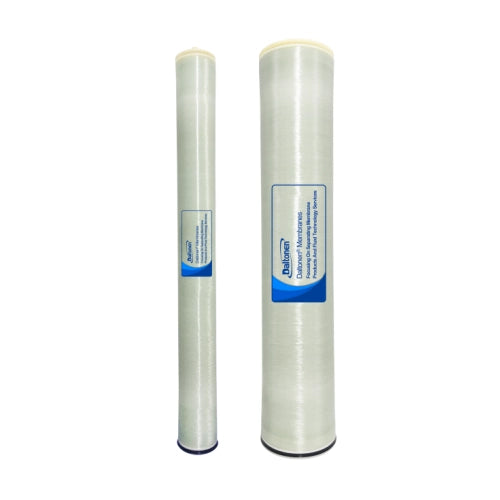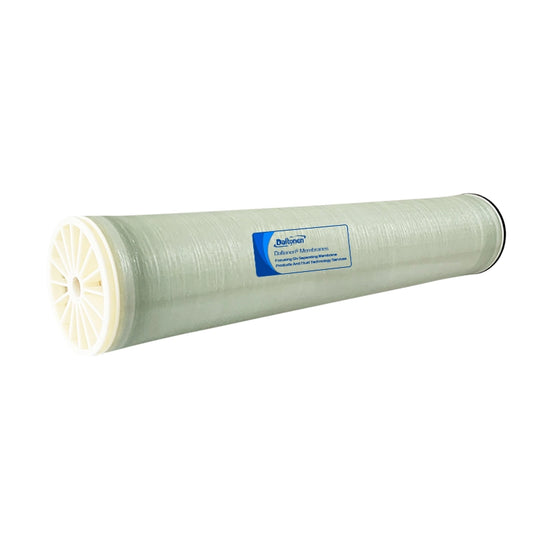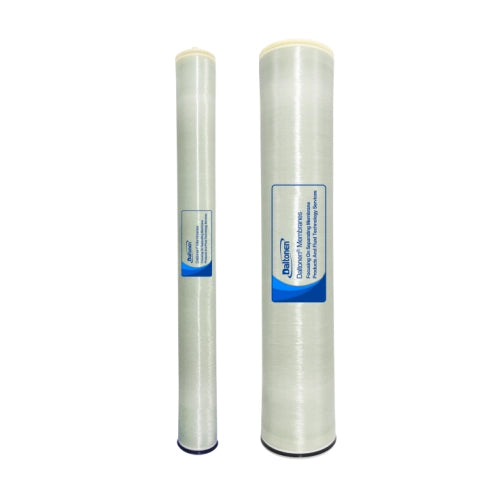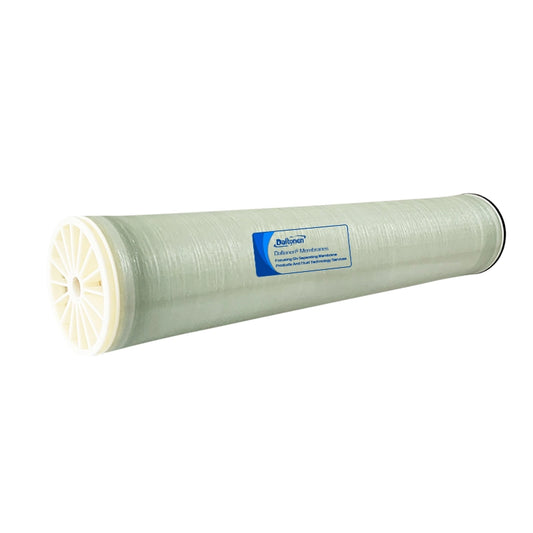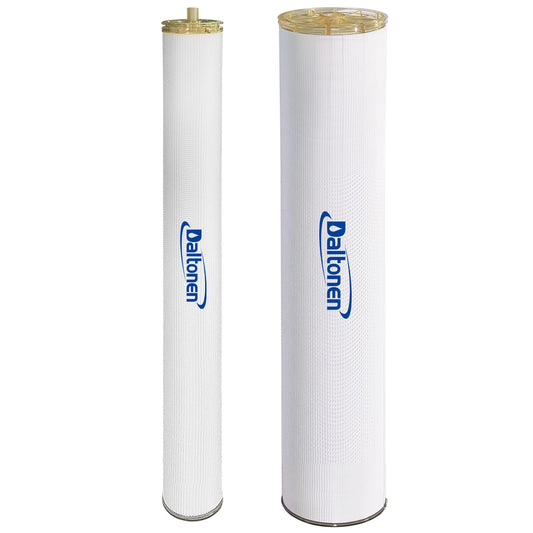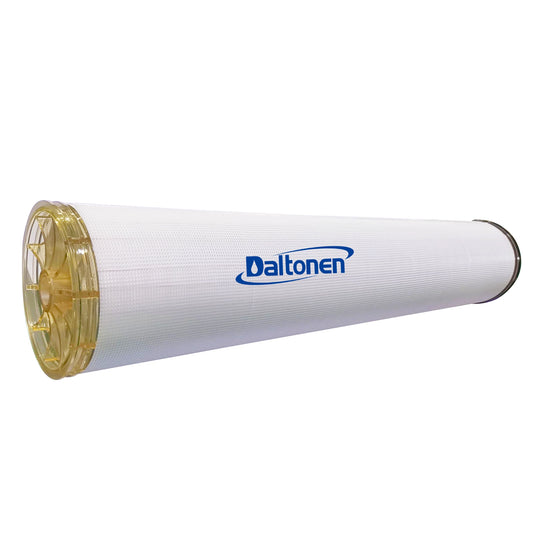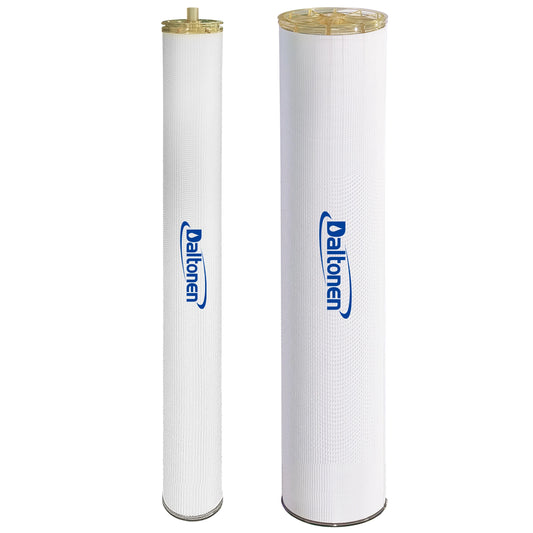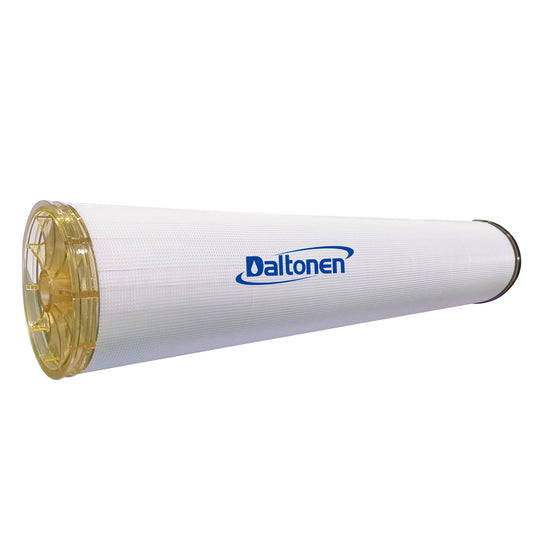Practical Application of Radioactive Wastewater and Reverse Osmosis (RO) Membranes
The following sections detail the practical application of radioactive wastewater and RO membranes, covering technical principles, actual applications, advantages, and challenges.
1. Technical Principle: How do RO Membranes Remove Radionuclides?
First, it is essential to understand that the goal of reverse osmosis is not to remove "radioactivity" itself, but to remove the substances that carry radioactivity, namely the radionuclides (radioactive atoms).
-
Size Exclusion Effect: The pores of RO membranes are extremely small (approximately 0.1 nanometers). Most radionuclides exist in water as hydrated ions (e.g., Cs⁺, Sr²⁺, Co²⁺) or complex ions, whose hydrated radii are much larger than the pore size of the RO membrane. Consequently, they are physically sieved and retained on the concentrate side.
-
Charge Repulsion Effect: The surface of RO membranes typically carries a negative charge. For cationic radionuclides (e.g., Cs⁺, Sr²⁺), the membrane surface charge creates a strong electrostatic repulsion force, pushing them away and thereby significantly increasing the rejection rate.
-
Diffusion Effect: Due to the concentration gradient across the membrane, water molecules can preferentially pass through the membrane material, while dissolved ions are effectively blocked.
Through these mechanisms, the RO system separates the radioactive wastewater into two streams:
-
Permeate (Product Water): The vast majority of radionuclides are removed, and the water quality can meet stringent discharge or reuse standards.
-
Concentrate (Brine): Nearly all radionuclides and salts are concentrated into this smaller volume stream, achieving a substantial volume reduction (volume reduction factor can reach 10-100 times). This facilitates more economical and safer subsequent treatment, such as solidification (e.g., cementation, vitrification), and final disposal.

2. Practical Application Scenarios
RO technology is particularly suitable for treating wastewater with low to intermediate radioactivity levels, complex compositions, and high salinity. Here are some typical practical applications:
-
Nuclear Power Plant Wastewater Treatment
-
Process Wastewater: Used to treat various wastewaters generated during plant operation, such as floor drains, chemical wastewaters, and shower/laundry wastewaters. RO is often used as a polishing step, typically following pretreatment like ultrafiltration in a "UF + RO" dual-membrane system, ensuring effluent quality.
-
Radioactive Liquid Waste Concentration: Used to concentrate boric acid solutions, chemical wastes, etc., generated in nuclear plants, achieving significant volume reduction, which lowers the cost and environmental burden of subsequent solidification.
-
-
Spent Fuel Reprocessing Plant Wastewater Treatment
-
The reprocessing of nuclear fuel produces wastewater with extremely complex compositions and high radioactivity levels. RO technology is often used as a pretreatment or polishing step in combination with other technologies (e.g., evaporation, chemical precipitation) for water recovery and radionuclide concentration.
-
-
Medical and Research Institution Wastewater
-
Hospitals (especially oncology departments), research institutes, and radiopharmaceutical producers generate low-level radioactive wastewater after using radioisotopes (e.g., Tc-99m, I-131). Small-scale, integrated RO units are an ideal choice for treating such wastewater to ensure compliant discharge.
-
-
Emergency Treatment After Nuclear Accidents
-
At the Fukushima Daiichi accident, one of the core technologies for treating the massive amount of contaminated water was the Advanced Liquid Processing System (ALPS), which is based partly on reverse osmosis technology to remove multiple radionuclides from the water.
-
3. Advantages and Challenges
Significant Advantages:
-
High Removal Rate: Achieves extremely high removal rates (typically >99%) for most radionuclides, especially divalent and polyvalent ions. The decontamination factors (DF) for nuclides like Sr-90, Co-60, and Pu are very high.
-
Significant Volume Reduction: This is one of the core values of RO technology. It can concentrate large volumes of wastewater into a much smaller volume of concentrate, drastically reducing the volume requiring final solidification. This significantly lowers long-term disposal costs and space requirements.
-
No Phase Change, Relatively Low Energy Consumption: Compared to evaporation processes, RO does not require heating to boiling points, resulting in lower energy consumption.
-
Modularity and Automation: The systems are flexibly designed and easily automated for remote operation, making them highly suitable for radioactive environments.
Significant Challenges and Limitations:
-
Membrane Fouling and Degradation: Organic matter, colloids, and sparingly soluble salts in the wastewater can cause membrane fouling, reducing permeate flow and increasing energy consumption. More importantly, the membrane material is continuously exposed to radiation, potentially causing polymer cross-linking or degradation, which affects membrane lifespan and performance. Optimized pretreatment and regular chemical cleaning are essential.
-
Challenge of Concentrate Treatment: The radioactive concentrate produced by the RO process is a higher-hazard waste stream. Its safe treatment and final solidification present a major challenge. RO technology does not destroy radioactivity but transfers and concentrates it.
-
Limitations for Specific Nuclides:
-
Tritium (³H): RO membranes are ineffective at removing tritium, as it exists as tritiated water (HTO), which is nearly identical in size to a water molecule and cannot be separated by the membrane.
-
Iodine-129: Iodine can sometimes exist as iodide ions (I⁻) or organoiodine compounds, which are less effectively rejected. Removal efficiency depends on its chemical species and may require pre-treatment like oxidation.
-
-
High System Reliability Requirements: Systems treating radioactive wastewater must be extremely reliable and safe to prevent leaks. Integrity monitoring of the membranes is critical.
4. Conclusion
In practical engineering, reverse osmosis membranes have become a mature, efficient, and crucial technology for treating low- and intermediate-level radioactive wastewater.
It is typically not used as a standalone process but is integrated into a complete treatment train:
Pretreatment (Screening, Chemical Conditioning, Ultrafiltration) → Core Treatment (Reverse Osmosis) → Polishing/Treatment (e.g., Evaporation, Ion Exchange) → Concentrate Solidification (Cementation/Vitrification).
Despite challenges like ineffectiveness against tritium and concentrate management, its exceptional volume reduction capability and high removal rates make it indispensable in applications such as nuclear power plant wastewater treatment and nuclear facility decommissioning. It is a core technology for achieving radioactive waste minimization and ensuring environmental safety.
